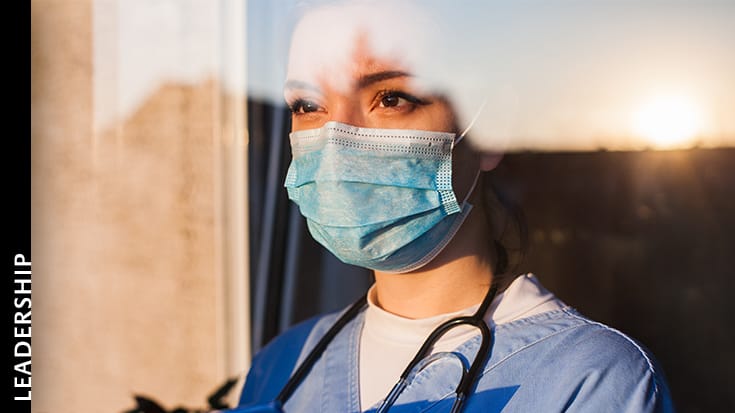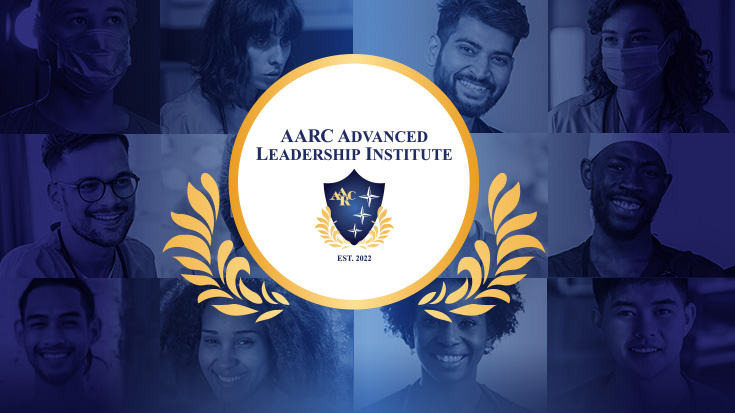
The COVID-19 pandemic wreaked havoc on health care facilities. It threw a big wrench into the operation of health care educational programs as well.
Three respiratory care educators explain how they managed to educate their students amid shutdowns that made business as usual impossible.
Get what you need and go
Charity Bowling, MA, RRT, and her students at Ivy Tech Community College in Indianapolis, IN, were on spring break when her administrators broke the news that the rest of the semester would not proceed as planned. “My phone and email lit up with cancellations and changes,” said the respiratory care program chair. ”As we returned to campus, we were informed that the campus was closing and to get what we needed.”
Hospitals canceled all previously scheduled clinical time for students as well, and Bowling and her faculty members scrambled to transition from face-to-face teaching to a virtual environment. They got up to speed on Zoom and worked on translating content typically provided during lectures to the online format.
“We searched for manufacturer and other videos to supplement our teaching, as well as assured students had computers and internet to keep going,” she said. As spring gave way to summer, they continued to rebuild their courses and move them around to continue to teach virtually and keep their students on track.
It hasn’t always been easy.
“Our program has seen many stressed-out students,” admits Bowling. “The unknown of what will happen next, fear of not completing the program, and trying to balance school with their personal lives has been challenging.” Many are also providing e-learning for their children, which complicates the situation further.
It is getting better, though. Now that students are allowed back on campus, she is doing some small group activities with them, including in the lab. Senior students are back in clinicals as well.
Experience with online education pays off
At Boise State University in Idaho, Jeff Anderson, MA, RRT, and his colleagues were ready when the news of campus closures came down. “We are fortunate in that we have long-standing experience with online education and the use of simulation,” said the associate professor in the bachelor’s degree program. “We were rapidly able to expand what had been face-to-face instruction to the online format.”
His administrators were instrumental in the process, providing financial support that allowed them to work with the university’s instructional technology groups to convert their classroom courses to a reliable online format quickly.
Ensuring the clinical education of their students has been a more significant challenge. “Our clinical facilities have limited the number of students on any given shift, as have many other facilities around the country,” Anderson said. ”Some facilities have canceled all clinical rotations.”
He credits Director of Clinical Education Samantha Davis, MSRC, RRT, RRT-NPS, for coming to the rescue, noting she has worked tirelessly to optimize clinical experiences for their students through simulation.
“Samantha is one of the main faculty members who runs simulation, and we have leaned upon that form of instruction to support our students’ progress,” Anderson said.
Still, he anticipates expanding into summer rotations to fill in the gaps in clinical education created by the pandemic.
Some degree of normalcy
Like his colleagues in Indiana and Idaho, Joel Livesay, MS, RRT, department chair at Spartanburg Community College in Spartanburg, SC, faced a campus closure and cancellation of clinicals soon after the pandemic arrived in the U.S. in the spring. He, too, had to pivot to virtual education and worked closely with his colleagues to make it happen.
“Our college eventually started allowing students to matriculate back in small groups, so we became very creative in coming up with clinical scenarios for simulation using existing technology we had in our simulation lab,” Livesay said. ”It really gave us the opportunity to utilize a lot of resources we previously had not had enough time to fully explore.”
The clinic started opening back up by the summer semester with limited rotations, and it began to feel a little more normal for faculty and students alike.
“About this time, our college was also allowing our classrooms to open up with, of course, the mask mandates and social distancing,” he said. His senior class graduated on time at the end of the summer, and a new — albeit smaller — class of students started the program.
“Like most, we are still hampered by the occasional COVID exposure and limited clinic, but we have been able to move through the fall better than expected,” Livesay said. ”The spring will bring new challenges, which I am sure with some additional issues we must address.”
Lessons learned
These three educators share the lessons they have learned during the pandemic —
Be flexible. If it doesn’t work, try something new. Listen to your students. They often share what they enjoyed about class. Make short videos of items such as calculations to help the students at home. Since it’s hard to use the whiteboard on Zoom, if you have someone record you doing the calculations, they can watch it over and over and feel more confident in their work. As we move forward, think of all the tools you can access to recreate your class — Google Forms, Zoom, videos, OERs, etc. Try shorter lectures and more group activities to get them thinking! — Charity Bowling
I would look back upon the Boy Scout motto of “be prepared.” Fortunately, respiratory care practitioners are a resilient bunch, with the ability to adapt as needed. Our teamwork mentality and ability to collaborate leads to continued success in preparing practitioners. The AARC’s Education Section provides a vehicle for faculty and programs to share best practices. We will continue to work with instructional design experts to fine-tune online and hybrid instruction, and this may help us reach students who would otherwise be unable to attend our programs in the face-to-face format. Lastly, although we always develop strong and lasting relationships with our students, we have emphasized communication with our students more in this environment than ever before. — Jeff Anderson
There is an attitude among respiratory therapists to be adaptable, which has served us well during these difficult times. The other is finding a way to keep our students safe while moving forward. I think our schools and clinics are slowly realizing that this isn’t going away, and we must find ways to adapt. PPE for the clinic probably remains our biggest obstacle. This obstacle is something the students will have to deal with upon graduation, and just like other challenges, we have always been able to overcome. — Joel Livesay
Email newsroom@aarc.org with questions or comments, we’d love to hear from you.















